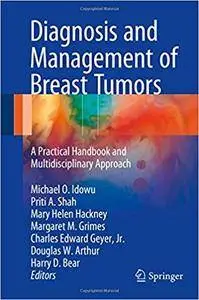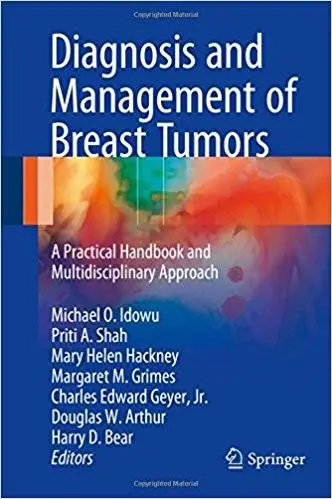Michael Ola Idowu and Priti Anilkumar Shah, "Diagnosis and Management of Breast Tumors: A Practical Handbook and Multidisciplinary Approach"
English | ISBN: 3319577255 | 2017 | 255 pages | PDF, EPUB | 40 MB
English | ISBN: 3319577255 | 2017 | 255 pages | PDF, EPUB | 40 MB
This text is designed to present a practical and concise handbook on the diagnosis and management of breast diseases for quick reference by trainees and practitioners. It emphasizes the approach to diagnosis and management of breast tumors written from the perspectives of each member of the multidisciplinary management team (pathologist, radiologist, medical oncologist, surgical oncologist and radiation oncologist). The text is divided into two sections. The first section is written by each subspecialty with focus on the overview and management of breast tumors, current controversies, position statement when necessary, and quality assurance. The radiology overview addresses questions such as when to perform breast imaging, the difference between screening and diagnostic mammograms, when to perform Magnetic Resonance Imaging (MRI) and ultrasound, the meaning of radiological descriptors, and lastly the cost effectiveness and quality assurance of radiologic assessment of breast tumors. The pathology overview addresses approaches to evaluation of breast biopsies and excision for calcifications, densities, distortion, asymmetry and masses, pitfalls to histologic interpretations, the utility of immunohistochemical stains, quality assurance and cost effectiveness, and current controversies and position statements. Surgical, medical and radiation oncology overviews address when to treat and when to refrain, current treatment options or modalities and the factors informing choice, utility of genomics or molecular diagnostics in management, quality assurance, controversies and position statements. The second section discusses common breast tumors (focusing on radiologic-pathologic diagnosis and correlation) using the practical approach highlighted in the first section. The entities discussed include but are not limited to fibroepithelial tumors, papillary lesions, spindle cell lesions, in-situ and invasive carcinomas.
The uniqueness of this book is the focus on the integrated subspecialty approaches with perspectives directly from subspecialty experts and emphasis on how each member of the multidisciplinary team can contribute to the optimal care of the breast cancer patient. The text aims to bridge the gap of the “what next” question and foster a comprehensive, team approach for trainees and practicing physicians by providing information about specific entities from diagnosis to treatment. Generous illustrations and tables in the text enhance appreciation of the entities being discussed.



